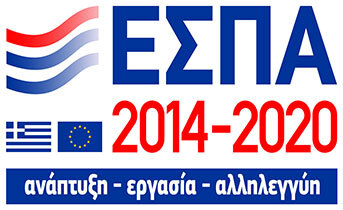|
|
| (2 intermediate revisions by one other user not shown) |
| Line 8: |
Line 8: |
| | |process_provision_org_group=9053 | | |process_provision_org_group=9053 |
| | |process_provision_org_directory=Monuments and Archaeological Works, Department of Byzantine and Post-Byzantine Archaeological Sites | | |process_provision_org_directory=Monuments and Archaeological Works, Department of Byzantine and Post-Byzantine Archaeological Sites |
| − | |process_remarks=Immovable monuments include: a) ancient goods dating up to 1830; b) contemporary cultural objects predating the last 100 years; and c) contemporary cultural objects dating with the last 100 years. The last two categories are classified as monuments on account of their architectural, urban planning, social, ethnological, folklore or historical, artistic or scientific importance. Once classified as such, the object is protected under the provisions of archaeological legislation. The same procedure is also followed for the classification of cultural objects other than religious objects, but the Services of Contemporary Monuments and Technical Works and the Directorate for the Protection and Restoration of Contemporary Monuments are the competent agencies. | + | |process_remarks=Immovable monuments include: |
| | + | * a) ancient goods dating up to 1830; |
| | + | * b) contemporary cultural objects predating the last 100 years; and |
| | + | * c) contemporary cultural objects dating with the last 100 years. The last two categories are classified as monuments on account of their architectural, urban planning, social, ethnological, folklore or historical, artistic or scientific importance. |
| | + | |
| | + | Once classified as such, the object is protected under the provisions of archaeological legislation. The same procedure is also followed for the classification of cultural objects other than religious objects, but the Services of Contemporary Monuments and Technical Works and the Directorate for the Protection and Restoration of Contemporary Monuments are the competent agencies. |
| | |process_deadline_duration=P1Y | | |process_deadline_duration=P1Y |
| | + | |process_evidence_identification_type=Identification document |
| | |process_type=Ingoing/Outgoing | | |process_type=Ingoing/Outgoing |
| − | |process_trigger=Applied for, Ex officio | + | |process_trigger=Ex officio, Applied for |
| | |process_trigger_type=Application (handwritten) | | |process_trigger_type=Application (handwritten) |
| | |process_usage=Other | | |process_usage=Other |
| | |process_output_type=Decision | | |process_output_type=Decision |
| − | |process_source=EU-GO (support), Framers
| |
| | |process_provided_to=Legal Entities | | |process_provided_to=Legal Entities |
| | |process_tax_type=Decisions | | |process_tax_type=Decisions |
| Line 32: |
Line 37: |
| | |process_evidence_step_total_number=0 | | |process_evidence_step_total_number=0 |
| | |process_evidence_step_digital_total_number=0 | | |process_evidence_step_digital_total_number=0 |
| | + | |process_source=EU-GO (support) |
| | |process_application_type=Application | | |process_application_type=Application |
| | |process_application_submission_type=Submitted by the applicant (in person or by post) | | |process_application_submission_type=Submitted by the applicant (in person or by post) |
| − | |process_application_owner=Legal entities, Persons | + | |process_application_owner=Persons, Legal entities |
| | |process_application_description=Αpplication by a citizen or the board of the religious building to the competent Ephorate of Antiquities in order to initiate the classification procedure. | | |process_application_description=Αpplication by a citizen or the board of the religious building to the competent Ephorate of Antiquities in order to initiate the classification procedure. |
| | |process_uuid=c0730281-7d6c-40ef-a5e0-1af8c7a9c885 | | |process_uuid=c0730281-7d6c-40ef-a5e0-1af8c7a9c885 |
| Line 56: |
Line 62: |
| | |process_evidence_is_under_prerequisite=No | | |process_evidence_is_under_prerequisite=No |
| | |process_evidence_alternative=No | | |process_evidence_alternative=No |
| − | |process_evidence_submission_type=Ex officio (digital), Ex officio (manual) | + | |process_evidence_submission_type=Ex officio (manual), Ex officio (digital) |
| | |process_evidence_description=A recommendation issued by the competent Ephorate of Antiquities, with photographic and design documentation | | |process_evidence_description=A recommendation issued by the competent Ephorate of Antiquities, with photographic and design documentation |
| | }} | | }} |






